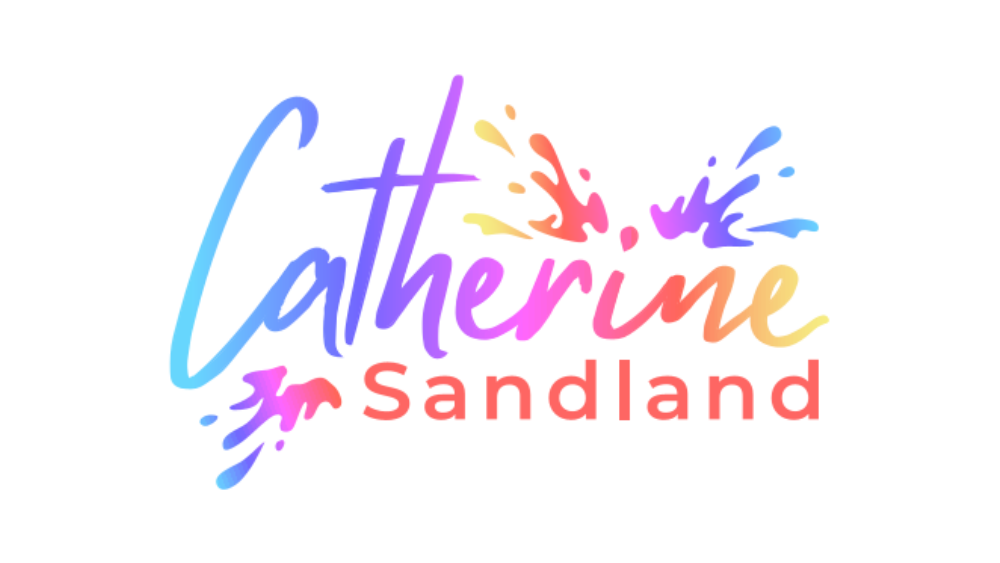By Catherine Sandland
Think about Maslow’s hierarchy of needs. What image comes to mind?
For most people, it’s a triangle. That simple shape, that visual framework, has become so synonymous with Maslow’s work that you can’t mention motivation without someone bringing it up. Whether they agree with his theory or not, his name gets referenced. Every single time.
Or consider Simon Sinek and his Golden Circle. Those three concentric circles explaining the power of why. Again, a shape that makes the concept crystal clear, easy to share, and impossible to discuss leadership without mentioning Sinek’s name.
This isn’t an accident. These are examples of proprietary intellectual property done brilliantly. They’ve created frameworks, models, and shapes that are uniquely theirs. And that matters more than you might think.
Why Does This Matter?
Imagine you’re creating a talk. You want to stand out above the crowd. You want to be seen as an authority in your sector, industry, company, or networking group. If you can create a framework, a model, or a shape that helps you explain what you do, the concept behind it, or the principles behind your product or service, several things happen.
First, it makes it much easier to explain. You become more concise, more compelling. People understand quickly, which means they listen more intently. They lean in. Second, it becomes portable. People walk away and talk about it. They share it with colleagues, clients, friends. Your ideas travel further than you ever could alone.
And here’s the bit that really matters: ideally, they reference you whenever they share it. Your name becomes attached to the idea itself. You become the authority not just because you know your stuff, but because you’ve packaged that knowledge in a way that’s memorable, shareable, and distinctly yours.
How Do You Create Something That’s Uniquely Yours?
It starts with taking some time to look at what you talk about and why you talk about it. Consider the language you typically use. Then ask yourself: how could I make this clearer? How could I impose a shape or structure on it that helps people grasp it instantly?
When I work with clients on this, I hold out three possibilities. Three ways to craft your content so it becomes uniquely yours.
1. Shape It
Literally, stick a shape on it. It could be a triangle, like Maslow. A circle or a cycle. A four-box model. Maybe it’s a series of stages, a three-step process, or seven principles (think Stephen Covey’s Seven Habits of Highly Effective People).
The shape doesn’t just make it visual. It makes it memorable. Our brains love patterns and structures. Give people a shape, and they’ll remember your concept far more easily than if you just listed out your points.
2. Compare It
Use metaphor or analogy. Compare your concept to something your audience already understands. Foundations of a building. Layers of an onion. Walls of a house. A journey, a roadmap, a bridge.
The power of comparison is that it takes something abstract or complex and makes it tangible. It gives people a reference point. When they hear your metaphor, they instantly understand the relationship between the parts of your idea. And they can explain it to others using that same comparison.
3. Position It
Position your principles and your approach as something distinct. Maybe you’re contrasting it with what’s happened in the past. Maybe you’re positioning it as the latest thinking, the contrarian position, or the surprising insight that turns conventional wisdom upside down.
Positioning creates tension, and tension creates interest. When you say, ‘Here’s what everyone’s been doing, and here’s why that doesn’t work anymore,’ people pay attention. They want to know what you know that they don’t.
Making It Portable
The real test of a framework or model is whether it travels. Can someone who’s heard you speak go back to their office and sketch it out for a colleague? Can they explain your concept using your language, your shape, your metaphor?
If they can, you’ve created something powerful. You’ve moved beyond just delivering information. You’ve created intellectual property that carries your authority with it wherever it goes.
And that’s the difference between being one voice in a crowded room and being the voice people reference long after you’ve stopped speaking.
Where to Start
Take a look at your core message. What are you really trying to say? What’s the principle, the process, the philosophy that underpins your work?
Then ask yourself:
Could I give this a shape? A triangle, a cycle, a pyramid, a bridge?
Could I compare it to something familiar? Layers, foundations, journeys, seasons?
Could I position it against something? The old way versus the new way, the conventional versus the surprising?
Once you’ve got that framework, test it. Share it in a conversation. Sketch it on a napkin. See if people can repeat it back to you. If they can, you’re onto something.
Because when your ideas stick, when they travel, when people reference you without you even being in the room, that’s when you’ve truly differentiated yourself. That’s when you’ve moved from being another speaker with good content to being an authority with a distinct point of view.
And that’s worth the effort, isn’t it?
***
Want help creating a framework that sets you apart?
Visit www.catherinesandland.com to learn more.

